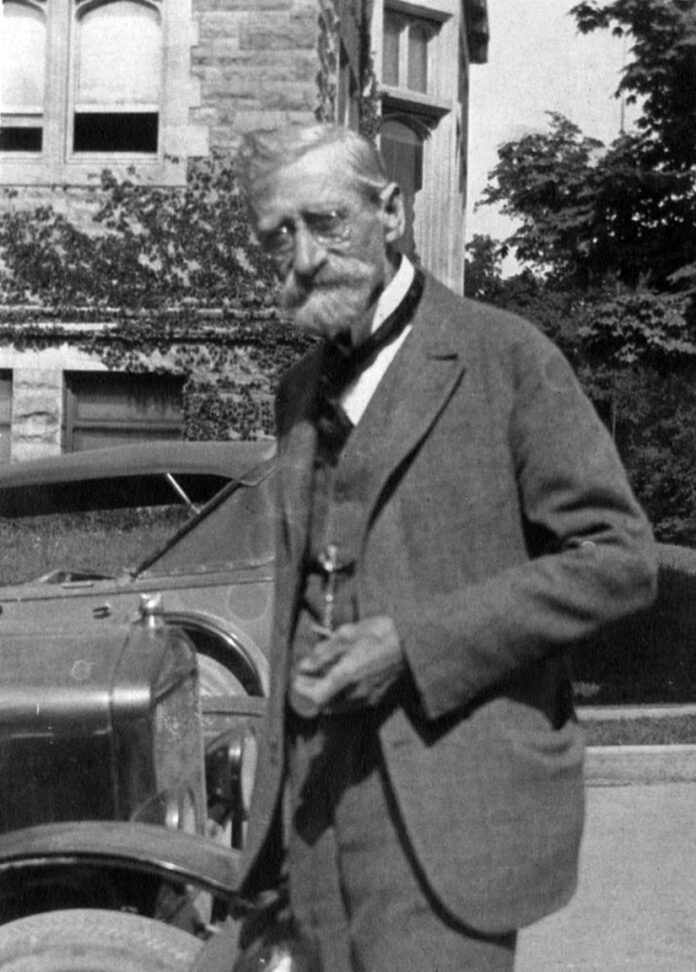T.C. Steele is credited with starting the movement that molded Brown County into the Art Colony of the Midwest.
On Nov. 28 viewers were invited to learn more about Steele and his life when the documentary “Singing Winds: The Life and Works of T.C. Steele” premiered on WTIU and Facebook Live.
“I’ve always had an enthusiasm for stories about Hoosiers who have followed their passion to make a difference, not only on the culture of Indiana, but with a larger influence on the social and cultural landscape of America. Steele was widely celebrated in his time as one of America’s great impressionist artists. He certainly falls into the category of impressive and impactful Hoosiers,” said producer Todd Gould.
“I was so impressed by researching and reading many of Steele’s journal entries and letters. He was a true transcendentalist when it came to his passion for nature and the Indiana landscape. That passion is reflected in his works, and in his correspondence with his wife, fellow artists and leaders from all over the world, where he shared his enthusiasm frequently.”
The documentary focuses on Steele’s life from his youth to his time with some of the major art centers of Europe before returning to Indiana “where he captured the subtle beauty of the Midwestern landscapes,” a press release from WTIU states.
Steele was born on a farm in Gosport, Indiana. His father died when Steele was a teenager. His mother insisted he take early art and music classes, which ultimately led to him to traveling to some of the world’s top art schools in Europe.
When he returned to Indiana he began a career in portrait painting, becoming one of the nation’s premier landscape painters during a time when the genre was only beginning in the country. At the height of his career Steele was considered to be one of the leading plein air artists in America, the release states.
The documentary is narrated by two-time Grammy winner Sylvia McNair.
The documentary is also available to watch online at www.wtiu.org/tcsteele.
During his research for the documentary, Gould said he was “most impressed” with Steele’s writing in his letters, speeches and communications with fellow artists and other community leaders.
“He wrote with a type of Gilded Age romanticism that is so uncommon in reading letters from other leaders from the mid to late 20th century. He loved just about everything in which he became involved. He embraced life, as well as art, with open arms and an open heart,” Gould said.
Gould continued that when Steele first moved to Brown County in 1907 most of the county was still “true wilderness.”
“And for the most part, it was a difficult challenge for most families living in the small log cabins of Brown County during the early 20th century. Steele just didn’t see the landscapes the same way that most in the area did. He saw the landscapes with constant awe and appreciation and was able to reflect that passion in his canvases,” Gould said.
“It’s fun to read about the little things in nature that he found so fascinating, and then see those same things reflected in his impressionist paintings.”
The T.C. Steele State Historic Site is where Steele and his wife Selma lived in Brown County. At various locations around the 200-plus-acre historic site, visitors can explore the real locations that inspired specific Steele paintings and engage in interactive activities that highlight Steele’s artistic process.
At age 60, Steele moved to the wooded, abandoned farm on the western edge of Brown County from the city with hopes of becoming a recluse, with his new bride, Selma.
While living at the property from 1907 to 1926, Steele produced a body of work that not only caught the attention of other city artists longing for a more serene setting, but also propelled him into national recognition as a landscape and portrait painter.
Having the documentary about Steele’s impact on arts completed and ready for a premiere this weekend feels “fantastic and very rewarding,” Gould said.
“I always tell people that when I start researching a new documentary project, it’s almost like gearing up to earn another mini-PhD in your subject matter. Typically I know very little about the deeper history and societal impact of my subjects at the beginning of a project,” Gould said.
Gould begins learning more when he starts looking into a subject’s specific heritage, which can be a two to three year process alone. The research involves reading first-person thoughts, like letters and journals, and then seeing how those thoughts play out in their actions with others. Then the documentary journey goes into studying the impact of those actions on the greater social and cultural landscapes across the nation and world, Gould explained.
“My goal is always to give viewers an opportunity to learn something about each subject that they may never have known and gain a sense of surprise to learn the facts behind what historical myths that might have grown over the years,” Gould said.
”To me, the real story behind these subjects is always so much more fascinating than the myths. And certainly much more relatable among all viewers who can see how the triumphs and tragedies in their lives are so similar to the stories that come to define our own lives.”
Even the viewers who may think they do not know a lot about fine art and American Impressionism will be surprised to learn how “interesting and engaging T.C. Steele’s life and works really are,” Gould said.
“And how relatable these works are to each and every one of us,” he said.
“That’s the real magic of these kinds of documentary projects. It’s fun to hear viewers report back to me later how fascinated and surprised they were to learn how much an artist like Steele created hundreds of intricate works, all motivated by real-world pains, pleasures and passions that we can all understand and appreciate.”





